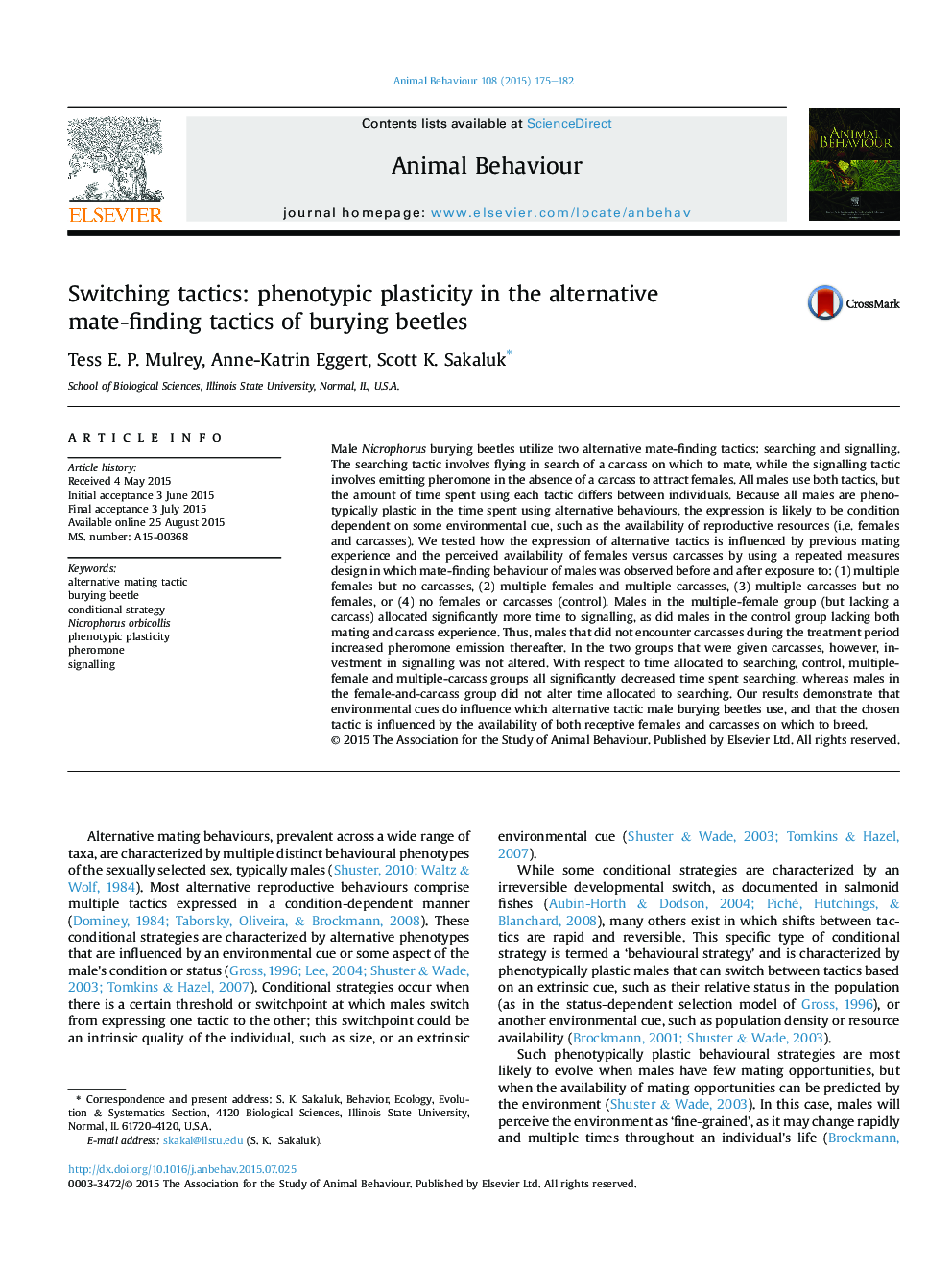| Article ID | Journal | Published Year | Pages | File Type |
|---|---|---|---|---|
| 8489680 | Animal Behaviour | 2015 | 8 Pages |
Abstract
Male Nicrophorus burying beetles utilize two alternative mate-finding tactics: searching and signalling. The searching tactic involves flying in search of a carcass on which to mate, while the signalling tactic involves emitting pheromone in the absence of a carcass to attract females. All males use both tactics, but the amount of time spent using each tactic differs between individuals. Because all males are phenotypically plastic in the time spent using alternative behaviours, the expression is likely to be condition dependent on some environmental cue, such as the availability of reproductive resources (i.e. females and carcasses). We tested how the expression of alternative tactics is influenced by previous mating experience and the perceived availability of females versus carcasses by using a repeated measures design in which mate-finding behaviour of males was observed before and after exposure to: (1) multiple females but no carcasses, (2) multiple females and multiple carcasses, (3) multiple carcasses but no females, or (4) no females or carcasses (control). Males in the multiple-female group (but lacking a carcass) allocated significantly more time to signalling, as did males in the control group lacking both mating and carcass experience. Thus, males that did not encounter carcasses during the treatment period increased pheromone emission thereafter. In the two groups that were given carcasses, however, investment in signalling was not altered. With respect to time allocated to searching, control, multiple-female and multiple-carcass groups all significantly decreased time spent searching, whereas males in the female-and-carcass group did not alter time allocated to searching. Our results demonstrate that environmental cues do influence which alternative tactic male burying beetles use, and that the chosen tactic is influenced by the availability of both receptive females and carcasses on which to breed.
Keywords
Related Topics
Life Sciences
Agricultural and Biological Sciences
Animal Science and Zoology
Authors
Tess E.P. Mulrey, Anne-Katrin Eggert, Scott K. Sakaluk,
